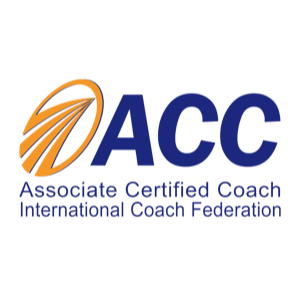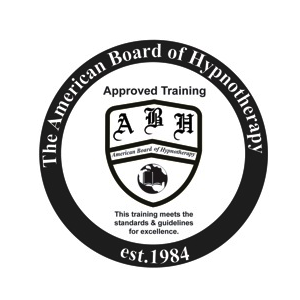Why is Neuro Linguistic Programming so useful?
Neuro-Linguistic Programming is an ability and a practice that allows you much more influence and self-discipline over yourself. Additionally, practicing NLP techniques can aid in the process of persuasion and make you a significantly more effective professional in most fields.
Due to these two factors, NLP can drive personal and professional growth leading to the person practicing this technique becoming the best and most useful version of themselves.
What is Neuro Linguistic Programming Techniques?
To be effective at Neuro Linguistic Programming, there are some learned skills that one must first become proficient in. This is where NLP techniques come in. These techniques are various methods of being, thinking, and acting which can help up your NLP abilities.
Additionally, various NLP techniques offer many benefits and can be used in specific situations or niches. Due to this, learning a wide variety of NLP techniques can be more effective than just learning one or two, as you will be equipped to handle a greater ambit of situations.
30+ Top NLP Techniques
The following is a list and description of the 30 most common and useful NLP techniques. These are good places for people new to NLP to start, as they will provide a solid foundation to build upon later.
1) Imagery training
Imagery training, also called mental rehearsal, is one of the most basic NLP techniques that any new beginner should learn.
This technique involves picturing the situation you will find yourself in and then trying to imagine the outcome you want. This NLP technique acts as a mental rehearsal for tough or high-stakes situations and thus prepares you for what’s to come.
2) NLP swish
The swish technique in NLP is similar to the imagery in that it also requires you to picture situations in your mind. However, it is more complex. Imagine two situations, one that is optimal and good and the other that is bad and unwanted.
Imagine the bad situation as loud and big in your head and bring it to the front of your mind while imagining the desirable situation as black and white and small.
After a few seconds of this, switch the situations around. Repeat this a few times to amplify the positives within your mind.
3) Modeling
Modeling is one of the practical ways in which you can apply the law of attraction to your life. To do this, simply imagine a situation where you get what you want and continue imagining it throughout your day. Doing so will shift your focus toward that goal and help make you more likely to achieve it.
4) Mirroring
Mirroring is a great technique to apply when interacting with someone else. Instead of carrying our unique body language, try replicating what the other person is doing to form a more empathetic connection with them. This will make you better at persuading the other person, as they will inadvertently trust you more.
5) Incantations
Incantations are ways to self-affirm whatever you want from a specific situation. Through this NLP technique, you can pump up your self-esteem and be more likely to accomplish the goals that you set out to. Simply speak positive and successful messages to yourself to help yourself gain a peak state with higher confidence or intensity.
6) Representational Systems
The human brain naturally represents the world through different senses. The representational systems NLP technique uses this fact to link certain inputs and situations with a specific sensory stimulation. By forming a positive correlation between a thought and a sensation, you can make it more intense and harness that energy toward completing a task.
7) Meta-Programs
When Meta programming, you want to consider, in your head, the possible outcomes and variations of a particular scenario. Essentially, play out the different permutations of a situation in your mind. This is so that no matter what happens in real life, you are adequately prepared for it as you have already encountered that contingency in your head.
8) Future pacing
Future pacing is similar to meta-programming in that you are trying to be prepared for events yet to come. However, how future pacing differentiates itself is that you are not simply thinking about one specific event or situation. Rather you are thinking about a chain of outcomes and trying to visualize yourself going through them.
9) Well-formed outcome
Well-formed outcomes are instances where you clearly and specifically try to envision the outcome of an upcoming situation. This NLP technique focuses on the result rather than the process.
It helps reaffirm that your desired result will come, providing you the reassurance you need to help make sure it happens.
10) VK/D – Visual Kinesthetic Dissociation
VK/D can be used to overcome phobias or traumas related to past incidents. To use this technique, imagine yourself in a past situation that gives you anxiety. Imagine yourself as a third party watching the situation from a different perspective than your own. This allows you to review the events in detail and overcome the associated mental baggage better.
11) Covert hypnosis
This NLP technique is fairly self-descriptive and straightforward, using standard hypnotic practices to gain influence over the other person. What’s different, however, is that instead of making the subject aware that they are about to undergo hypnosis, this can be done implicitly so that you are better able to make it through their safeguards.
12) Presuppositions
This is another NLP technique linked to your mindset regarding what will happen. Simply carry good predictions and assumptions with you as you go into a situation, and what you want will be more likely to happen. This technique also utilizes the law of attraction to work.
13) Meta Models
Meta models involve figuring out a situation in your head and forming clear conditions of victory concerning what you need to do for what outcome to be achieved. These allow for clarity and ruthless effectiveness in work situations where you can figure out what needs to be done to be successful.
14) Matching
Matching is another technique in which you try to mirror the movements and body language of the person you are talking to. This allows you to build rapport with them more easily and hence connect in the way you want to so that you can be more convincing in the discussion or relationship.
15) Leading & Anchoring
Leading and anchoring is a technique where you invest the subject into your words. You find the intersection between their interests and yours, so they have a stake in buying what you sell. You can then use other persuasion techniques paired with this to close the deal or discussion on your terms.
16) Six-step reframing
Reframing is an extremely crucial technique. Instead of presenting a situation as it is, reframe it in a light that is likely to be more convincing given the situation. For example, in a transactional relationship, rather than viewing the situation as between a buyer and a seller, you can pitch it as one between two partners.
17) Affirmations
Much like incantations, affirmations also involve telling yourself positive things to strengthen the intensity of your resolve as well as make those behaviors shine more through your action. Thus by focusing on your strengths of yourself and affirming them, you are better able to capitalize on them to achieve success.
18) Dissolving
Dissolving is the practice by which you ‘dissolve’ out of a situation and separate yourself from your ego. This technique is effective as it allows you to have greater clarity on a situation and thus be better equipped to resolve it objectively. Instead, you review the situation as a neutral and indifferent third party to conduct a proper intellectual analysis.
19) Exploding
This NLP technique requires the confidence and force of will to be able to tell yourself that you have the ability and the energy to get things done. Moreover, this should come off as enthusiasm and drive in interactions with others. By changing your state of mind to one that is brimming with life, you will be better able to achieve your goals without issue.
20) Amplify Feelings
Whatever feelings you or the other person is feeling, find ways to amplify them. This has the advantage of expanding the scope of your being and increasing the intensity with which you approach situations and feel emotions so that you are more likely to follow up on your dreams and thoughts.
21) Belief Change
Whenever someone goes into a situation, they have pre-formed beliefs regarding how the situation will go. By practicing belief change, you can convince people otherwise. By changing their beliefs, the standard by which they act can also be changed, and thus you can have a greater degree of influence over them.
22) Feedforward
This technique uses your perceptions and information to persuade your subject. Instead of telling them what you think, provide them with the information that made you think this way. This way, they can arrive at the same conclusion organically and thus be more likely to believe in the message or idea.
23) Perceptual positions
There are three perceptual positions to be aware of. Your position, the other person’s position, and the position of a neutral observer in that situation. By looking at a circumstance in all three lights, you can better modify your behavior to achieve success due to the additional clarity gained.
24) Self Compassion
Self-compassion is relatively straightforward. This is the process of having empathy for yourself. This can be particularly effective when trying to overcome fears or past trauma because it allows you to affirm that the situation is not insurmountable.
25) Visual Squash
Visual squash is a relatively advanced NLP skill that can be used to overcome conflict. It simply involves exploring the different input events and logical levels that brought the disagreement in the first place. By highlighting these and bringing them to the forefront, you can better provide clarity to a situation. The end goal is to resolve the issue at hand, hopefully.
26) Storytelling
This NLP technique is as old as time; by creating a story along with the explanation or argument you are making, you can compel the listener to empathize by inserting themselves into the same situation. This can be an extremely effective technique when trying to market or generate sales.
27) Submodalities
Each situation has a series of smaller constituent parts. For example, if you are in a group setting, various individual relationships govern the group interactions as a whole. By breaking situations down like this into their constituent elements, you can gain greater clarity regarding how to act to achieve your goals.
28) Timeline Therapy
This NLP technique can help overcome trauma by breaking the event and its after-effects down into a timeline so that you can explore the different stages of the interactions and hence be better able to process what has happened.
29) States & Anchors
States and anchors can be used to understand better how invested your subject is in a situation. You can first judge their emotional state and act accordingly by building an anchor into what you sell so they have a personal stake in the matter.
30) Mental Rehearsal
Mental Rehearsal allows you to practice an event in your mind such that you can act it out when the time comes. Essentially, you pre-process all your actions and reactions so that you know exactly what to do at the moment rather than suffer from the anxiety of coming up with the appropriate actions on the spot.
How can you learn Neuro Linguistic Programming Techniques?
As this exploration of NLP techniques has demonstrated, there is a lot to this practice, and it is not exactly simple to master. However, fortunately, there are a series of actions you can take to improve your NLP techniques.
There are classic sources to learn from, such as Youtube or neuro-linguistic programming books. However, training courses by NLP professionals, like those taught by Sebastien Leblond, can significantly speed up the process and ensure that you properly learn to utilize these techniques.








